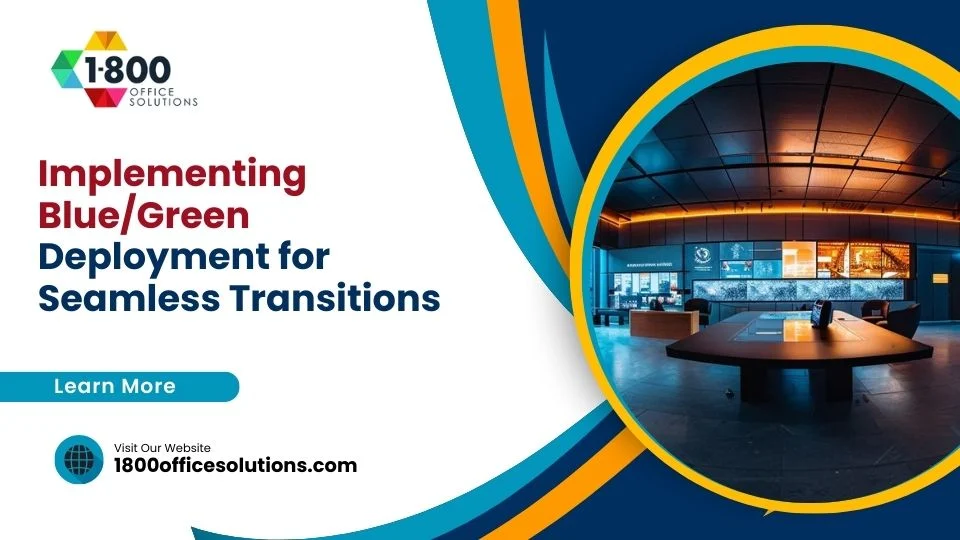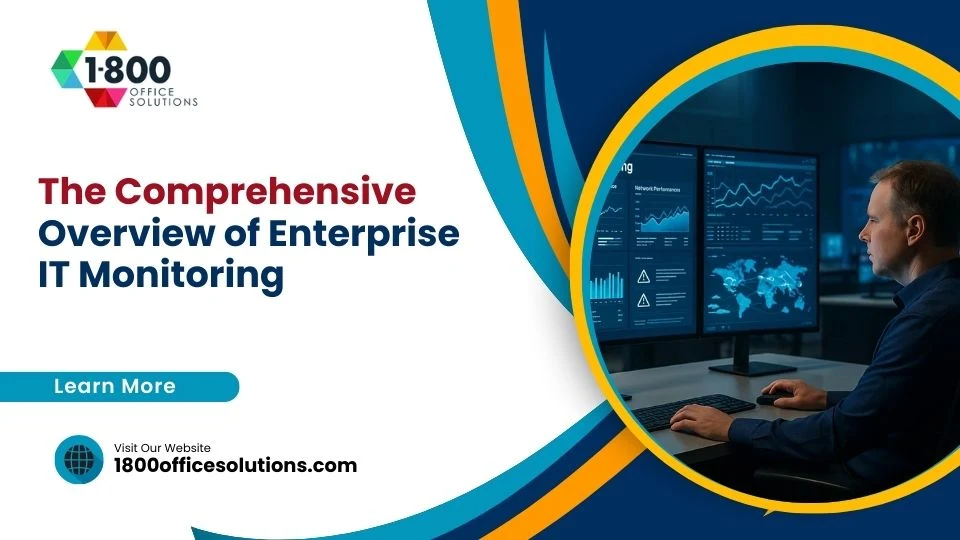Comparing Trusted Commercial Copier Brands on the Market
Choosing the right commercial photocopier can significantly impact a business’s productivity and efficiency. With numerous brands available, it can be challenging to determine which one best meets specific needs. This article will compare trusted commercial copier brands, focusing on key aspects such as reliability, features of popular models like Konica Minolta, and pricing. By understanding these elements, readers will gain insights into making informed decisions, addressing common issues like budget constraints and technological compatibility in their office settings.
Key Takeaways
- Customer feedback plays a vital role in assessing copier reliability and user satisfaction
- Strong warranty and service options enhance confidence in copier brands and reduce downtime
- Energy efficiency ratings impact operational costs and align with corporate sustainability goals
- High uptime statistics ensure consistent performance crucial for workflow and productivity
- Effective training and onboarding support maximize copier performance and user satisfaction
Assessing Reliability of Leading Copier Brands in the Market

Factors influencing copier reliability ratings include customer feedback on reliability experiences, brand histories for reliability insights, and industry performance metrics for top brands. Evaluating warranty and service options provides further reassurance, while examining tech support responses from major brands ensures usability in daily workflows. Each of these aspects plays a crucial role in enhancing productivity within a document management system.
Understand the Factors Influencing Copier Reliability Ratings
Several factors contribute to copier reliability ratings, with customer feedback playing a pivotal role. Users often share their experiences with different brands, highlighting critical performance aspects such as the longevity of equipment, quality of document output, and the effectiveness of features like faxing. For instance, brands like Epson provide both budget-friendly options and high-end models, which can influence ratings based on user satisfaction and the specific needs of various business environments.
Another essential consideration is the warranty and service options offered by manufacturers. A strong service infrastructure indicates that a brand is committed to its products’ reliability. Companies need to assess brands based on their service responsiveness and the technical support available for daily operations. By examining these elements, businesses can make informed decisions while comparing trusted commercial copier brands in the market:
- Customer feedback on reliability experiences
- Brand histories for reliability insights
- Industry performance metrics for top brands
- Warranty and service options for reassurance
- Tech support responses to ensure usability
Review Customer Feedback on Reliability Experiences
Customer feedback is vital in assessing the reliability of leading copier brands such as Kyocera, Ricoh, and Lexmark. Users frequently report on their experiences with specific models, which offers valuable insights into the performance, durability, and efficiency of these machines. For example, Ricoh users often highlight robust features and reliable performance, making it a preferred option for many businesses, while Kyocera is praised for cost-effectiveness and low maintenance frequency.
When examining the reliability of these brands, information from user reviews can reveal trends and potential concerns. Lexmark users, for instance, may focus on ease of integration and quality of print output, which are crucial for smooth daily operations. By collecting and analyzing this feedback, companies can better understand how each machine fits their specific operational needs and make more informed purchasing decisions.
Analyze Brand Histories for Reliability Insights
Analyzing brand histories provides valuable insights into the reliability of commercial copier manufacturers, including Toshiba. Established companies usually have extensive records of their product performance over time. For instance, Toshiba is known for its efficient speed and robust software solutions that enhance user experience, especially for businesses that heavily rely on high-volume document output. Understanding these historical performance metrics helps organizations select a brand with a proven track record in durability and functionality.
Additionally, examining how brands have responded to technological advancements, such as the integration of touchscreen interfaces, can offer further reliability insights. Brands that continuously update their models to incorporate the latest features, like user-friendly touchscreens, tend to maintain better customer satisfaction. This focus on innovation not only enhances user experience but also minimizes issues related to outdated technology, ensuring that businesses can rely on their copiers for consistent performance.
Compare Industry Performance Metrics for Top Brands
When assessing leading copier brands, industry performance metrics serve as a significant indicator of reliability. Metrics such as print speed, toner yield, and overall operating costs provide valuable data that businesses can utilize to make informed decisions. For instance, comparisons of how different models perform in a cloud computing environment can highlight their efficiency, helping organizations determine the best match for their document management needs.
Understanding the price-to-performance ratio becomes essential in this evaluation. Brands that offer competitive pricing alongside high-quality performance, such as low toner consumption and effective management features, will generally stand out in reliability assessments. By focusing on these critical metrics, organizations can ensure they choose a copier that minimizes long-term costs while maximizing productivity:
Examine Warranty and Service Options for Reassurance
Assessing warranty and service options is critical when evaluating trusted commercial copier brands, as these elements directly impact the overall investment. A strong warranty not only indicates the manufacturer’s confidence in their product’s durability but also provides reassurance regarding accessibility to support when needed. Brands that offer comprehensive service plans can enhance efficiency and minimize downtime, ensuring businesses can rely on their equipment for daily operations without interruption.
Furthermore, sustainable manufacturing practices in service options can provide added value for businesses looking to align their equipment choices with eco-friendly initiatives. Service responsiveness and support accessibility help organizations understand the long-term benefits of their equipment investment. Brands that prioritize customer support and sustainability can instill confidence in businesses, knowing that their copiers will perform reliably while contributing to a responsible operational approach.
Evaluate Tech Support Responses From Major Brands
Evaluating tech support responses from major brands can significantly influence purchasing decisions for businesses seeking reliable copiers. Companies like Ricoh, Kyocera, and Lexmark have established their reputation by providing responsive and knowledgeable customer support, which is essential when addressing issues related to user interfaces or default settings. For instance, Ricoh’s commitment to innovation can be seen in its proactive support systems, offering online resources and live chat features that enhance user satisfaction and ensure swift resolutions to technical problems.
Additionally, environmentally friendly practices in tech support not only contribute to a company’s sustainability goals but also benefit overall operations. Brands that prioritize customer engagement through regular follow-ups and feedback channels tend to foster a stronger bond with their clients. This commitment to customer care reflects not just on the products but also on the service experience, allowing businesses to focus on productivity without disruption from technical challenges.
Exploring Features of Popular Copier Models Available Today

Understanding the essential features of modern commercial copiers is crucial for businesses when comparing trusted brands. This section will cover key aspects such as print speeds among leading models, scanning and copying capabilities, and connectivity options for shared use. User-friendly interfaces and eco-friendly features will also be assessed to evaluate cost-effectiveness and corporate social responsibility, enhancing the overall efficiency in digital printing environments.
Identify Essential Features for Modern Commercial Copiers
Modern commercial copiers come equipped with essential features that enhance productivity and security for any company’s document management. Leading models like the Canon imageRUNNER ADVANCE series incorporate advanced capabilities such as high-speed printing, intuitive user interfaces, and robust scanning options, making them ideal for businesses seeking to streamline their workflows. These features not only improve efficiency but also support managed print services, allowing organizations to track usage and control costs effectively.
In today’s digital environment, security is a top priority for companies, and modern copiers address this need with built-in encryption and secure access controls. By utilizing models that prioritize data protection, businesses can safeguard sensitive information, ensuring compliance with industry standards. The combination of reliable performance and security measures in commercial copiers like those from Canon empowers organizations to maintain smooth operations while confidently managing their documents.
Compare Print Speeds Among Leading Copier Brands
When comparing print speeds among leading copier brands, it is essential to consider features such as the automatic document feeder and user interface. For instance, brands like Kyocera and Ricoh are known for their quick printing capabilities, enabling businesses to efficiently handle high volumes of print jobs. This efficiency directly supports operational needs, especially in environments that rely on speedy document processing for remote work and digital transformation initiatives.
Factors such as print speed also tie into sustainability efforts, with brands focusing on recycling options to minimize waste. Efficient models not only deliver quick output but also incorporate technology that ensures reliable performance without compromising eco-friendly practices. By choosing copiers with competitive print speeds and responsible features, organizations can enhance productivity while supporting their commitment to sustainability.
Investigate Scanning and Copying Capabilities Offered
The scanning and copying capabilities of modern commercial copiers are crucial for businesses looking to improve efficiency and secure document management. Brands like Konica Minolta stand out for their advanced duplex printing features, which allow users to scan and copy double-sided documents seamlessly. This functionality not only saves time but also reduces paper consumption, aligning with environmentally conscious practices that businesses increasingly prioritize.
Furthermore, access control features enhance the security of sensitive documents during the scanning and copying process. Many copiers now come equipped with sophisticated systems that require user authentication before performing tasks, safeguarding valuable information. Coupled with effective ink and toner cartridge management systems, businesses can optimize their resources while maintaining high-quality output, ensuring that all operational needs are met efficiently and securely:
Modern copiers equipped with advanced connectivity options are essential for organizations looking to enhance their document management processes. These models facilitate seamless integration with existing computer hardware within an organization’s infrastructure, allowing multiple users to share access efficiently. Businesses that prioritize such features typically find improved productivity levels and reduced operational delays, directly impacting their service delivery to customers.
Selecting a copier with robust connectivity options can also simplify contract management, enabling organizations to manage their printing needs through centralized systems. Effective customer service from manufacturers focuses on ensuring that these technologies operate smoothly, minimizing disruptions in daily tasks. By investing in copiers that support various connectivity protocols, organizations can better allocate their resources and maintain a reliable workflow that meets both employee and client demands.
Assess User-Friendly Interfaces and Controls
When assessing the user-friendly interfaces and controls of popular copier models, design is a pivotal factor that influences daily operations. Copiers with intuitive layouts, such as touchscreens featuring color displays, allow users to navigate functions quickly and efficiently. Brands originating from Japan, especially those developed in Tokyo, excel in creating user-centric designs that enhance accessibility while maintaining robust data security, ensuring that sensitive information remains protected during all document management tasks.
Usability is further improved through customizable options that cater to diverse business needs. Advanced features such as personalized shortcut settings and streamlined menu systems empower users to focus on their core tasks without the frustration of complicated processes. By opting for copiers with well-designed interfaces, companies can minimize training time, increase productivity, and bolster overall satisfaction, which translates to a smoother workflow:
- Intuitive touchscreen layouts
- Robust data security features
- Color display options for easy navigation
- Customizable shortcut settings
- Streamlined menu systems for quick access
Review Eco-Friendly Features in Top Models
Many modern commercial copiers now focus on eco-friendly features, addressing concerns of sustainability directly linked to ownership costs. These models often include energy-saving modes that significantly reduce power consumption during downtime, which not only conserves energy but also lowers costs associated with printing. For companies considering a lease, choosing a copier with sustainable characteristics can enhance their brand image while demonstrating a commitment to environmental responsibility.
Additionally, advanced recycling features are prevalent in leading models, allowing businesses to minimize waste and support resource conservation. Brands like Ricoh and Kyocera offer integrated systems that ensure cartridges are recycled efficiently, promoting a cycle of learning about sustainability within organizations. These eco-friendly initiatives can also contribute to scalability by aligning printing practices with broader corporate goals focused on reducing environmental impact:
Understanding Price Ranges of Trusted Copier Brands

Analyzing average pricing across different copier models helps businesses understand initial costs and long-term investments. Exploring financing and leasing options, as well as comparing ownership expenses against upfront prices, allows companies to assess value effectively. Evaluating value-added services tied to pricing and available discounts can further enhance decision-making, while examining pricing transparency among leading brands ensures informed choices for budget-conscious organizations investing in document management solutions.
Analyze Average Pricing Across Different Copier Models
When analyzing average pricing across various copier models, businesses need to consider how initial payment impacts their long-term budget for document management. Different brands and features, such as color printing capabilities, affect the upfront costs, shifting the focus toward automation options that streamline workflows. Understanding the balance between payment commitments and performance enhancements guides organizations in selecting a model that supports their workload efficiently, while avoiding unnecessary financial strain.
Moreover, evaluating the learning curve associated with new copier models is essential to avoid disruptions in daily operations. Models with user-friendly interfaces may have a slightly higher price point, but the reduced training time can lead to significant cost savings in productivity. Companies should weigh these considerations against the benefits of advanced features, ensuring they choose a copier that meets both their immediate budgetary needs and long-term operational goals.
Explore Financing and Leasing Options for Businesses
Businesses should consider various financing and leasing options when acquiring commercial copiers to align with their budget and operational requirements. Retail leasing often presents flexible terms that enable organizations to access state-of-the-art monochrome models without making substantial upfront investments. Such arrangements allow businesses to optimize cash flow while ensuring they have the latest technology to meet consumer demands efficiently.
Additionally, leasing arrangements can be advantageous for companies intending to upgrade their copiers regularly. By choosing leasing instead of outright purchases, businesses can take advantage of lower monthly costs and the opportunity to refresh their equipment as advancements occur in the market. This proactive approach ensures organizations stay competitive and responsive to changing consumer needs, enhancing their overall productivity and service delivery.
Compare Long-Term Costs of Ownership Versus Initial Price
When assessing commercial copiers, businesses must consider both the initial purchase price and the long-term ownership costs. While a lower price can be appealing, additional factors such as maintenance, toner expenses, and repair services can quickly accumulate, making a seemingly affordable model more expensive over time. For instance, printers with a higher toner yield may require fewer replacements, ultimately translating to significant savings in the long run.
Moreover, companies should evaluate the warranty and service agreements associated with each brand. A copier with a higher upfront cost may offer extensive service contracts or a longer warranty period, thus reducing repair expenses and downtime when issues arise. Comparing these aspects can enable businesses to make more informed decisions that align with their budgetary constraints and operational goals:
Evaluate Value-Added Services Included in Pricing
Value-added services play a significant role in determining the overall cost of trusted commercial copiers. For example, many manufacturers offer comprehensive maintenance plans, which can reduce unexpected repair costs and extend the lifespan of the equipment. These services often include remote troubleshooting, regular software updates, and priority technical support, enhancing operational efficiency and ensuring minimal disruption to business activities.
Furthermore, training services for staff can prove invaluable, as they ensure that employees can utilize the copiers effectively from the start. By integrating these value-added services into the pricing of copiers, companies can achieve a better understanding of the total cost of ownership. This holistic approach not only supports productivity but also empowers businesses to make informed decisions when comparing different copier brands in the market.
Examine Available Discounts or Promotions
Businesses seeking to acquire commercial copiers should consider available discounts or promotions to optimize their budget. Manufacturers often run seasonal sales or special offers that can significantly reduce purchase costs. Engaging with authorized dealers may uncover exclusive promotions that align with specific business needs, making high-quality equipment more accessible without sacrificing performance or reliability.
Additionally, companies can benefit from loyalty programs or bulk purchase discounts that many brands provide. For instance, organizations that consistently use a specific manufacturer may qualify for reduced pricing on future acquisitions or services. This approach not only promotes cost savings but also fosters a long-term partnership with a trusted equipment provider, ensuring consistent support and product upgrades that enhance operational efficiency.
Review Pricing Transparency Among Leading Brands
Pricing transparency is vital for businesses assessing trusted commercial copier brands, as it influences decision-making and budgeting. Leading manufacturers typically provide clear information regarding initial costs and any additional fees, enabling organizations to gauge the overall financial commitment associated with various models. This transparency reduces uncertainty and allows businesses to strategically plan their investments in office equipment.
Furthermore, authentic communication of pricing helps organizations compare long-term expenses and potential savings across brands. By understanding both the upfront costs and the ongoing maintenance requirements, companies can make informed choices that align with their operational needs. Such clarity not only enhances trust in the manufacturer but also supports effective budgeting practices that promote financial stability and operational efficiency.
Evaluating Customer Support Services From Copier Manufacturers

Evaluating customer support services from copier manufacturers involves assessing various key aspects that influence overall satisfaction. This includes examining the availability and responsiveness of customer service teams, comparing service level agreements, and investigating online resources for customer assistance. Additionally, analyzing warranty coverage and repair options, reviewing training and onboarding support, and seeking user feedback on their experiences with support teams provide crucial insights into the reliability of these services.
Thoroughly understanding these elements equips businesses to choose a brand that not only meets their operational needs but also fosters a supportive environment for effective document management.
Assess Availability and Responsiveness of Customer Service
When evaluating customer support services from copier manufacturers, assessing the availability and responsiveness of their support teams is crucial. Companies like Ricoh and Kyocera have built their reputation on providing timely assistance, ensuring that businesses quickly resolve technical issues that may disrupt daily operations. By prioritizing quick response times and availability, these brands enhance user satisfaction and encourage continued loyalty from their customers.
Furthermore, efficient customer support systems often include multiple channels for assistance, such as phone, email, and live chat options. This allows businesses to choose the method that best fits their needs, ensuring immediate access to the help they require. The effectiveness of these support services can greatly impact overall user experience, as companies seek assurance that their copiers will perform reliably with proper support available when needed:
Compare Service Level Agreements and Support Plans
Service Level Agreements (SLAs) are essential for businesses when choosing a commercial copier brand, as they outline the commitments manufacturers make regarding response times, maintenance, and support. Companies like Ricoh and Kyocera have established clear SLAs to ensure their clients receive timely assistance and reliable service. A well-defined SLA not only enhances operational reliability but also provides businesses with peace of mind, knowing that support will be available when they need it most.
Support plans offered by copier manufacturers can vary significantly, impacting both service quality and costs. For example, some brands provide comprehensive plans that cover regular maintenance, emergency repairs, and even training for staff. By comparing these support plans, businesses can identify which manufacturer aligns best with their operational needs and budget constraints, ensuring a smoother experience when managing their document workflows:
Investigate Online Resources for Customer Assistance
Investigating online resources for customer assistance is crucial for businesses evaluating commercial copier brands. Many manufacturers, such as Ricoh and Kyocera, offer comprehensive online knowledge bases, FAQs, and video tutorials that enable users to troubleshoot common issues independently. These resources can significantly reduce downtime and enhance user confidence while operating their office equipment.
Moreover, forums and community support channels provide additional avenues for users to seek advice and share experiences. Engaging with other customers can lead to practical solutions and tips that may not be available through official channels. By exploring these online resources, businesses can empower their staff with the knowledge needed to maximize the efficiency and functionality of their copiers.
Analyze Warranty Coverage and Repair Options
Warranty coverage and repair options serve as a vital component for businesses assessing trusted commercial copier brands. A strong warranty not only reflects the manufacturer’s confidence in their equipment but also offers peace of mind in case of unforeseen malfunctions. For instance, brands like Ricoh provide extensive service plans that ensure prompt repair services, allowing businesses to minimize downtime during critical operational periods.
Analyzing repair options available through different manufacturers reveals crucial information about their commitment to customer support. Companies that offer responsive repair services, combined with clear warranty guidelines, create an environment where businesses can rely on their copiers for ongoing productivity. By choosing a brand with robust warranty coverage and efficient repair processes, organizations can better navigate potential technical challenges and maintain seamless document workflows.
Review Training and Onboarding Support Provided
Effective training and onboarding support are essential for maximizing the performance of commercial copiers. Brands like Ricoh and Kyocera recognize the importance of equipping users with the necessary skills to navigate their machines efficiently. These companies often provide tailored training programs, including onsite demonstrations and user manuals, which can significantly reduce the learning curve and enhance overall productivity in daily operations.
Additionally, ongoing support and resources play a critical role in the onboarding process. Many manufacturers now offer comprehensive online training modules, video tutorials, and customer portals that allow users to access information at their convenience. This level of support not only builds user confidence but also empowers organizations to fully leverage the capabilities of their copiers, addressing any operational challenges proactively:
Seek Feedback on Experiences With Support Teams
Gathering feedback from users about their experiences with support teams can provide crucial insights into the reliability of copier brands. Companies often share their satisfaction levels regarding response times, the helpfulness of support staff, and the effectiveness of solutions provided. By examining online reviews and testimonials, businesses can identify patterns that highlight which brands excel in customer service, thus influencing their decision-making process.
Additionally, user experiences with support teams can reveal how well a brand addresses common issues and technical challenges. For instance, if multiple users report quick resolutions and proactive follow-ups from a specific manufacturer, it reflects positively on that brand’s commitment to customer support. Understanding these dynamics allows businesses to choose a copier brand that not only meets their operational needs but also provides assurance of dependable assistance when issues arise.
Analyzing Sustainability Practices of Copier Brands on the Market

Understanding the sustainability practices of copier brands is crucial for businesses seeking eco-friendly options. This section will investigate the eco-friendly materials used in production, compare energy efficiency ratings of popular models, and assess the recycling programs offered by manufacturers. Additionally, it will review certifications for environmental compliance, examine initiatives for reducing electronic waste, and analyze brand commitments to sustainability efforts.
Investigate Eco-Friendly Materials Used in Production
Leading copier brands are increasingly adopting eco-friendly materials in their production processes to align with sustainability initiatives. For instance, manufacturers are utilizing recycled plastics and bioplastics to construct various components of their copiers. This commitment to sustainable materials not only reduces waste but also enhances the overall lifecycle management of office equipment, appealing to environmentally conscious businesses.
To further demonstrate their commitment, several brands highlight certifications for environmental compliance, which assure customers of their eco-friendly practices. Companies that integrate energy-efficient designs and sustainable manufacturing processes can significantly lower their carbon footprint. By prioritizing these eco-friendly approaches, trusted commercial copier brands respond to the growing demand for environmentally responsible office solutions, ensuring that businesses can operate sustainably while meeting their document management needs:
- Utilization of recycled and bioplastics in manufacturing
- Commitment to reducing waste in production processes
- Certifications for environmental compliance
- Energy-efficient designs that lower carbon footprints
- Response to the demand for sustainable office solutions
Compare Energy Efficiency Ratings of Popular Models
Energy efficiency ratings are a crucial factor when comparing trusted commercial copier brands, as they directly impact operational costs and environmental sustainability. Many leading manufacturers offer models with varying energy efficiency certifications, including ENERGY STAR ratings, which indicate reduced power consumption during printing and standby modes. By opting for copiers with high energy efficiency ratings, businesses can minimize utility expenses and fulfill their commitment to eco-friendly practices, ultimately enhancing their corporate responsibility.
Popular models from brands like Ricoh and Kyocera are recognized for their robust energy-saving features, providing tangible benefits for organizations focused on sustainability. For example, these copiers often integrate energy-efficient designs that lower overall energy usage without sacrificing performance. By selecting copiers with strong energy efficiency ratings, businesses not only support their operational needs but also make a positive contribution to the environment, aligning their equipment choices with broader sustainability goals.
Assess Recycling Programs Offered by Manufacturers
Recycling programs offered by manufacturers play a critical role in enhancing sustainability efforts within the office equipment sector. Many trusted copier brands, such as Ricoh and Kyocera, have implemented comprehensive recycling programs that encourage organizations to return used cartridges and machines for responsible disposal and recycling. This initiative not only minimizes waste but also supports the creation of a circular economy, aiding companies in reducing their environmental footprint while managing the costs associated with office supplies.
Incorporating strong recycling practices not only aligns with corporate social responsibility initiatives but also provides businesses with an opportunity to engage in eco-friendly operations. For example, programs that offer incentives for returning products can enhance customer loyalty while promoting sustainability. By choosing manufacturers who prioritize effective recycling solutions, organizations can contribute to a more sustainable future while ensuring compliance with environmental regulations:
- Manufacturers like Ricoh and Kyocera have implemented extensive recycling programs.
- These initiatives minimize waste and support a circular economy.
- Incentives for returning products enhance customer loyalty.
- Engaging in recycling practices ensures compliance with environmental regulations.
Review Certifications for Environmental Compliance
Certifications for environmental compliance play a pivotal role in evaluating trusted commercial copier brands. These certifications, such as ENERGY STAR and ISO 14001, demonstrate a manufacturer’s commitment to minimizing environmental impact through sustainable practices. For example, brands that achieve ENERGY STAR certification are recognized for their energy-efficient models, which consume less power and reduce greenhouse gas emissions during operation.
Furthermore, obtaining ISO 14001 certification indicates that a company actively manages its environmental responsibilities, continuously seeking improvement in its eco-friendly practices. Organizations looking for reliable copiers should prioritize brands with these certifications, as they reflect a dedication to sustainability and responsibility. Selecting copiers from manufacturers with strong environmental compliance not only benefits the planet but also enhances the company’s reputation, appealing to environmentally-conscious clients and stakeholders.
Examine Initiatives for Reducing Electronic Waste
Trusted commercial copier brands are increasingly implementing initiatives aimed at reducing electronic waste, highlighting their commitment to sustainability. For instance, manufacturers like Ricoh and Kyocera have established robust take-back programs that allow businesses to return obsolete equipment for responsible disposal or recycling. These initiatives not only minimize environmental impact but also help companies manage compliance with waste regulations efficiently.
Furthermore, many copier brands focus on designing products with longevity in mind, using components that can be easily repaired or upgraded. By providing clear guidance on how to maintain and extend the life of their devices, these brands aid organizations in reducing the frequency of replacements. This proactive approach not only conserves resources but also empowers businesses to adopt more sustainable practices within their document management processes.
Analyze Brand Commitments to Sustainability Efforts
Trusted commercial copier brands demonstrate their commitment to sustainability through various initiatives designed to minimize environmental impact. Many manufacturers have set measurable goals such as reducing greenhouse gas emissions and transitioning to sustainable materials in their production processes. For instance, brands like Ricoh and Kyocera focus on implementing eco-friendly practices that encompass everything from resource management to energy-efficient designs.
Additionally, these companies actively participate in recycling and take-back programs to promote a circular economy. By encouraging businesses to return used cartridges and equipment, they not only reduce waste but also contribute to the responsible disposal of electronic products. This approach ensures compliance with environmental regulations while appealing to organizations seeking to align their equipment choices with broader sustainability goals:
- Implementation of eco-friendly materials in production
- Setting measurable goals for reducing emissions
- Promotion of recycling and take-back programs
- Contribution to a circular economy
- Ensuring compliance with environmental regulations
Investigating Performance Metrics of Leading Copier Brands

This section focuses on key performance metrics essential for comparing trusted commercial copier brands. It will cover critical aspects such as print quality across major copier models, durability and lifespan of popular brands, and average uptime statistics for different models. Additionally, it will analyze the speed of service calls and repairs, review professional test results and industry reviews, and evaluate performance consistency in various settings, providing practical insights for informed decision-making.
Compare Print Quality Across Major Copier Models
Evaluating print quality across major copier models is essential for businesses that prioritize document presentation and clarity. Brands such as Ricoh, Kyocera, and Lexmark are known for their advanced printing technologies, producing sharp text and vibrant images that meet professional standards. For example, the Kyocera Ecosys series consistently delivers high-resolution prints, making it a popular choice for organizations that require precise graphics for reports and presentations.
Moreover, the performance metrics associated with print quality not only reflect the capabilities of each model but also address businesses’ needs for reliability and consistency. Regular assessments, such as professional reviews and user feedback, provide insights into how well different models perform over time, particularly in high-volume environments. Understanding these aspects is crucial for organizations selecting copiers that will meet their particular requirements effectively:
- Evaluation of print resolution and clarity
- Comparison of color accuracy and consistency
- Assessment of reliability in high-volume print jobs
- Insights from professional reviews and user feedback
Assess Durability and Lifespan of Popular Brands
Durability and lifespan are critical considerations for businesses evaluating commercial copiers. Leading brands such as Kyocera and Ricoh have built reputations for manufacturing robust machines designed to withstand high-volume usage. For example, models from Kyocera are known for their long-lasting components, which significantly reduce the frequency of repairs, aiding organizations in minimizing operational disruptions.
In addition, regular assessments of user experiences highlight the reliability of copiers from trusted brands. Businesses often report that Ricoh devices continue to perform well even after several years of use, demonstrating their capacity to handle extensive printing tasks efficiently. Choosing a copier with proven durability not only enhances workplace productivity but also offers peace of mind regarding long-term investments in document management solutions.
Examine Average Uptime Statistics for Different Models
Average uptime statistics serve as a crucial metric when evaluating trusted commercial copier brands. High uptime percentages demonstrate a brand’s reliability, ensuring that businesses can rely on their copiers for consistent performance without frequent interruptions. For example, leading brands like Ricoh and Kyocera often report uptime averages exceeding 95%, indicating their machines can handle extensive workloads while minimizing downtime that affects productivity and workflow.
Organizations need to prioritize uptime in their assessments, as any disruption can lead to delays in document management and negatively impact overall operations. By reviewing uptime statistics, businesses gain insights into how well a copier will perform over time and its suitability for high-demand environments. The choice of a copier with proven uptime reliability allows organizations to enhance their operational efficiency and maintain a seamless flow of work, ultimately meeting their printing needs without unnecessary interruptions.
Analyze the Speed of Service Calls and Repairs
Analyzing the speed of service calls and repairs is crucial for organizations assessing trusted commercial copier brands. Prompt response times can significantly minimize disruptions in daily operations, allowing businesses to maintain productivity without lengthy downtimes. For instance, leading brands like Ricoh and Kyocera are known for their efficient service protocols, often resolving technical issues within a matter of hours, which directly impacts user satisfaction and operational efficiency.
Additionally, the effectiveness of service responses can reflect a brand’s commitment to customer support. Companies that possess well-implemented service networks ensure their copiers can resume functionality quickly, preventing any substantial delays in document management tasks. Businesses should prioritize copier brands that showcase a strong track record in service efficiency, as this reliability can enhance overall performance and user confidence in their equipment.
Review Professional Test Results and Industry Reviews
Professional test results and industry reviews are essential for organizations considering the purchase of commercial copiers, as they provide objective evaluations of key performance metrics. Industry experts often conduct extensive testing on various brands, assessing critical factors such as print quality, speed, and reliability under different operational scenarios. For instance, user feedback paired with third-party assessments can reveal how specific models perform in high-demand environments, helping companies align their needs with the most suitable equipment choices.
Furthermore, credible sources like print industry publications and consumer reports frequently publish comprehensive comparisons of copier brands, highlighting notable strengths and weaknesses. These insights not only facilitate better purchasing decisions but also help businesses understand how particular models stand up against competitors in real-world applications. By referring to professional test results and industry reviews, organizations can make informed choices that enhance their document management strategies and overall performance:
- Professional assessments on key performance metrics
- User feedback on brand reliability in high-demand scenarios
- Comprehensive comparisons from credible sources
Evaluate Performance Consistency in Various Settings
Performance consistency across different environments is a key indicator of a copier’s reliability, particularly in busy business settings. Leading brands like Ricoh and Kyocera have developed technologies that enable their copiers to maintain high performance levels whether in a small office or a large enterprise. Such adaptability ensures that organizations can depend on their equipment for uninterrupted document management, regardless of workload variations or operational demands.
Understanding how copiers perform under diverse conditions is critical for businesses aiming for efficiency. For instance, those utilizing Ricoh copiers report consistent output quality even in high-volume scenarios, which is essential for meeting tight deadlines. Evaluating these performance metrics helps organizations identify reliable brands that align with their specific requirements, ultimately enhancing productivity and minimizing operational disruptions.
Frequently Asked Questions
What are the most reliable commercial copier brands available today?
When evaluating the most reliable commercial copier brands today, several stand out. Among them, Xerox, Canon, and Ricoh are known for their durability and advanced features. Businesses increasingly favor these brands for their innovation in multifunctional systems that enhance office efficiency.
Another strong contender is Konica Minolta, which excels in high-quality printing and robust performance. Alongside these, Brother provides affordable, dependable options tailored for smaller firms. Investing in any of these brands ensures access to exceptional support and service, critical for maintaining operational continuity.
Which features should I look for in a copier model?
When selecting a copier model, consider print quality, speed, and monthly duty cycle. Features like duplex printing and scanning capabilities enhance efficiency. Additionally, connectivity options such as Wi-Fi and Ethernet allow seamless integration into office environments, promoting productivity.
Look for advanced security features to protect sensitive documents, ensuring compliance with data regulations. User-friendly interfaces simplify operation, while robust support and service agreements from suppliers like 1800 Office Solutions provide peace of mind, ensuring reliable equipment support and maintenance.
How much do trusted copier brands generally cost?
The cost of trusted copier brands typically ranges from $1,000 to $10,000, depending on features and specifications. Basic models suited for small businesses may cost less, while high-performance multifunction devices designed for larger operations will command higher prices.
When budgeting for office equipment, it’s also vital to consider maintenance and supplies. Regular servicing and consumables, such as toner and paper, can incur additional expenses that vary by brand. Investing in quality copiers can lead to long-term savings and reliability.
What kind of customer support do copier manufacturers provide?
Copier manufacturers typically offer robust customer support to assist businesses with their equipment. This includes technical assistance, troubleshooting, and maintenance requests. Support options often feature phone support, online chat, and dedicated service representatives, ensuring timely assistance for any issues.
Furthermore, many manufacturers provide extensive resources, such as user manuals and online guides, to help users understand their devices. Some companies may also offer on-site service for repairs and regular maintenance, enhancing the longevity and performance of copiers, printers, and multifunction devices.
How do copier brands implement sustainability practices?
Many copier brands implement sustainability practices by utilizing energy-efficient technologies and eco-friendly materials. For instance, they often manufacture machines from recyclable components and promote energy-saving modes to reduce consumption during idle times, contributing to overall environmental conservation.
Furthermore, these brands encourage responsible recycling of used toner cartridges and paper waste.
- They often partner with recycling programs.
- Some offer take-back programs, ensuring that old equipment is disposed of properly.
- This holistic approach enhances their commitment to sustainable business practices.
Conclusion
Comparing trusted commercial copier brands is essential for businesses looking to optimize their document management solutions. By evaluating factors such as reliability, performance metrics, and customer support, organizations can make informed decisions that enhance productivity and reduce long-term costs. Understanding the features and sustainability practices of various models ensures that companies align their equipment choices with operational goals and environmental responsibilities. Ultimately, a thorough comparison empowers businesses to select copiers that meet their specific needs, fostering efficiency and reliability in everyday tasks.










